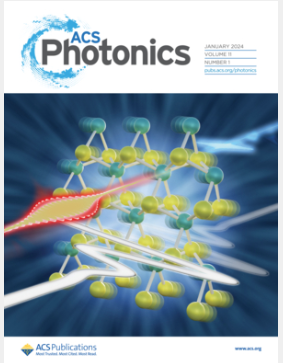High-Temperature Strong Nonreciprocal Thermal Radiation from Semiconductors
IF 6.5
1区 物理与天体物理
Q1 MATERIALS SCIENCE, MULTIDISCIPLINARY
引用次数: 0
Abstract
Nonreciprocal thermal emitters that break the conventional Kirchhoff’s law allow independent control of emissivity and absorptivity and promise exciting new functionalities in controlling heat flow for thermal and energy applications. In enabling some of these applications, nonreciprocal thermal emitters will unavoidably need to serve as hot emitters. Leveraging magneto-optical effects, degenerate semiconductors have been demonstrated as a promising optical material platform for nonreciprocal thermal radiation. However, existing modeling and experimental efforts are limited to near room temperature (<373 K), and it remains unclear whether nonreciprocal properties can persist at high temperatures. In this work, we demonstrate strong nonreciprocal radiative properties at temperatures up to 600 K. We propose a theoretical model by considering the temperature dependence of the key parameters for the nonreciprocal behavior and experimentally investigate the temperature dependence of the nonreciprocal properties of sufficiently doped InAs, a degenerate semiconductor, using a customized angle-resolved high-temperature magnetic emissometry setup. Our theoretical model and experimental results show agreement, revealing that strong nonreciprocity can persist at temperatures over 800 K for high-temperature stable semiconductors, enabling a pathway for nonreciprocal radiative heat flow control at high temperatures.

半导体的高温强非互反热辐射
非互易热辐射器打破了传统的基尔霍夫定律,允许独立控制发射率和吸收率,并有望在热能和能源应用中控制热流方面实现令人兴奋的新功能。在实现这些应用的过程中,不可避免地需要非互易热辐射体作为热辐射体。利用磁光效应,简并半导体已被证明是一种很有前途的非互反热辐射光学材料平台。然而,现有的建模和实验工作仅限于接近室温(<373 K),并且仍然不清楚非互反性质是否可以在高温下持续存在。在这项工作中,我们在高达600 K的温度下证明了强的非互反辐射特性。我们通过考虑非互反行为关键参数的温度依赖性,提出了一个理论模型,并使用定制的角度分辨高温磁发射装置,实验研究了充分掺杂的简并半导体InAs的非互反性质的温度依赖性。我们的理论模型和实验结果一致,揭示了高温稳定半导体的强非互易性可以在超过800 K的温度下持续存在,从而为高温下的非互易辐射热流控制提供了途径。
本文章由计算机程序翻译,如有差异,请以英文原文为准。
求助全文
约1分钟内获得全文
求助全文
来源期刊

ACS Photonics
NANOSCIENCE & NANOTECHNOLOGY-MATERIALS SCIENCE, MULTIDISCIPLINARY
CiteScore
11.90
自引率
5.70%
发文量
438
审稿时长
2.3 months
期刊介绍:
Published as soon as accepted and summarized in monthly issues, ACS Photonics will publish Research Articles, Letters, Perspectives, and Reviews, to encompass the full scope of published research in this field.
 求助内容:
求助内容: 应助结果提醒方式:
应助结果提醒方式:


